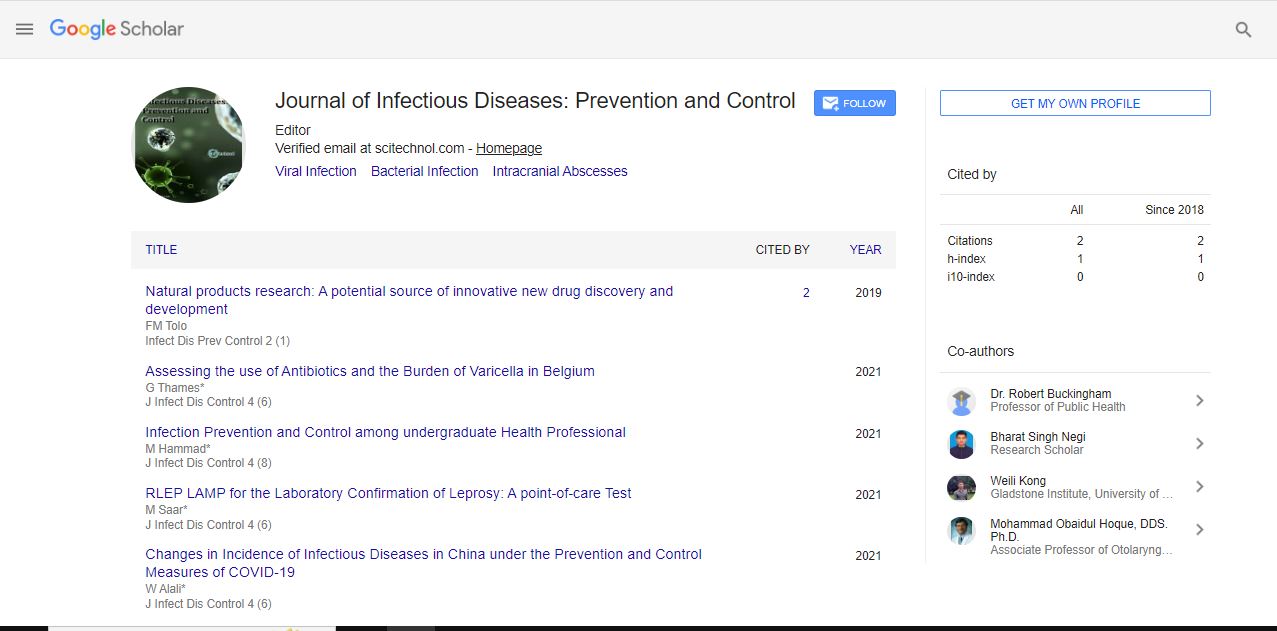Perspective, Vol: 6 Issue: 3
Hematopathology Diagnosis and Classification of Blood Disorders
Michael Corbett*
1Department of Medicine, Queen's University, Kingston, Ontario, Canada
*Corresponding Author: Michael corbett,
Department of Medicine, Queen's
University, Kingston, Ontario, Canada
E-mail: corbett@michel.ca
Received date: 30 August, 2023, Manuscript No. IDPC-23-116448;
Editor assigned date: 01 September, 2023, PreQC No. IDPC-23-116448 (PQ);
Reviewed date: 15 September, 2023, QC No. IDPC-23-116448;
Revised date: 22 September, 2023, Manuscript No. IDPC-23-116448 (R);
Published date: 29 September, 2023, DOI: 10.36648/idpc.6.3.142
Citation: Corbett M (2023) Hematopathology Diagnosis and Classification of Blood Disorders. Infect Dis Prev Control 6:3.
Abstract
Description
Hematopathology is a specialized field of pathology that focuses on the study of blood disorders, encompassing diseases that affect the blood and bone marrow. These disorders can range from benign conditions to life-threatening malignancies, making accurate diagnosis and classification vital for appropriate patient management and treatment. In this essay, we will delve into the world of hematopathology, exploring its significance, diagnostic methods, and the classification of blood disorders. Hematopathology plays a critical role in modern healthcare. Blood disorders, if left undiagnosed or untreated, can lead to severe health complications, including anemia, clotting disorders, and hematologic malignancies such as leukemia and lymphoma. Accurate diagnosis and classification are the cornerstones for tailoring effective treatment plans, monitoring disease progression, and predicting patient outcomes.
Diagnosis of blood disorders
Clinical presentation and history: The diagnostic journey often begins with the patient's clinical history and presentation. Symptoms such as fatigue, bleeding, bruising, or recurrent infections may raise suspicions of a blood disorder. A thorough history helps in narrowing down the diagnostic possibilities.
Laboratory tests: A battery of blood tests is typically the next step. These include Complete Blood Counts (CBC), coagulation profiles, and biochemical markers specific to certain blood disorders, such as erythropoietin levels in cases of anemia.
Microscopic examination: Blood smears are essential tools for diagnosing various blood disorders. Microscopic examination allows pathologists to evaluate the shape, size, and number of blood cells, aiding in the diagnosis of conditions like anemias, leukemias, and thrombocytopenias.
Bone marrow aspiration and biopsy: When further information is required, bone marrow aspiration and biopsy are performed. These procedures provide insight into the cellular composition of the bone marrow, helping diagnose hematologic malignancies, myelodysplastic syndromes, and aplastic anemias.
Flow cytometry: Flow cytometry is instrumental in classifying various blood disorders, particularly leukemia and lymphoma. It involves analyzing the characteristics of individual cells, such as their surface markers and DNA content, to distinguish between different cell types.
Classification of blood disorders
Blood disorders are a heterogeneous group of diseases, necessitating a systematic classification to guide diagnosis and treatment. They can be broadly categorized as follows
Anemias: Anemias are characterized by a reduced number of red blood cells or hemoglobin, leading to symptoms like fatigue and pallor. Hematopathologists classify anemias based on the size and shape of red blood cells. The most common types include irondeficiency anemia, megaloblastic anemias, and hemolytic anemias.
Coagulation disorders: Coagulation disorders involve abnormalities in the blood's clotting mechanisms, leading to excessive bleeding or clot formation. Hematologists categorize coagulation disorders as congenital or acquired, with well-known examples such as hemophilia and thrombophilia.
Myeloproliferative Neoplasms (MPNs): MPNs are clonal disorders in which an abnormal population of blood-forming cells proliferates within the bone marrow. Key MPNs include polycythemia vera, essential thrombocythemia, and myelofibrosis. They are identified through a combination of clinical symptoms and molecular and histological findings.
Lymphoproliferative disorders: These disorders involve the abnormal proliferation of lymphoid cells, leading to diseases like lymphoma and leukemia. Hematopathologists employ immunohistochemistry, flow cytometry, and molecular genetic studies to classify these conditions accurately.
Myelo Dysplastic Syndromes (MDS): MDS comprises a group of disorders where blood-forming cells in the bone marrow do not mature correctly. Classification is based on the number of cell lineages affected and the extent of dysplasia, with multiple subtypes recognized.
Hematologic malignancies: Hematopathologists play a pivotal role in diagnosing and classifying hematologic malignancies such as leukemia, lymphoma, and myeloma. These disorders are classified based on the type of affected blood cells, genetic mutations, and clinical features.
Bleeding disorders: Bleeding disorders, such as von Willebrand disease and platelet function disorders, result in abnormal bleeding and require specific diagnostic tests and classification for accurate treatment.
Hematopathology is a critical branch of pathology, responsible for the diagnosis and classification of a wide range of blood disorders. Accurate and precise classification is essential for determining the appropriate treatment strategy and predicting patient outcomes. Hematopathologists employ a combination of clinical history, laboratory tests, microscopic examination, and advanced techniques like flow cytometry and molecular studies to arrive at a conclusive diagnosis. The importance of hematopathology extends beyond the laboratory, directly impacting the lives of individuals affected by blood disorders. By continuously refining diagnostic criteria and classification schemes, hematopathologists contribute to improving patient care and advancing our understanding of these complex diseases. In an era of personalized medicine, hematopathology remains at the forefront of delivering tailored treatments to patients with diverse blood disorders, ensuring better outcomes and quality of life.
 Spanish
Spanish  Chinese
Chinese  Russian
Russian  German
German  French
French  Japanese
Japanese  Portuguese
Portuguese  Hindi
Hindi 